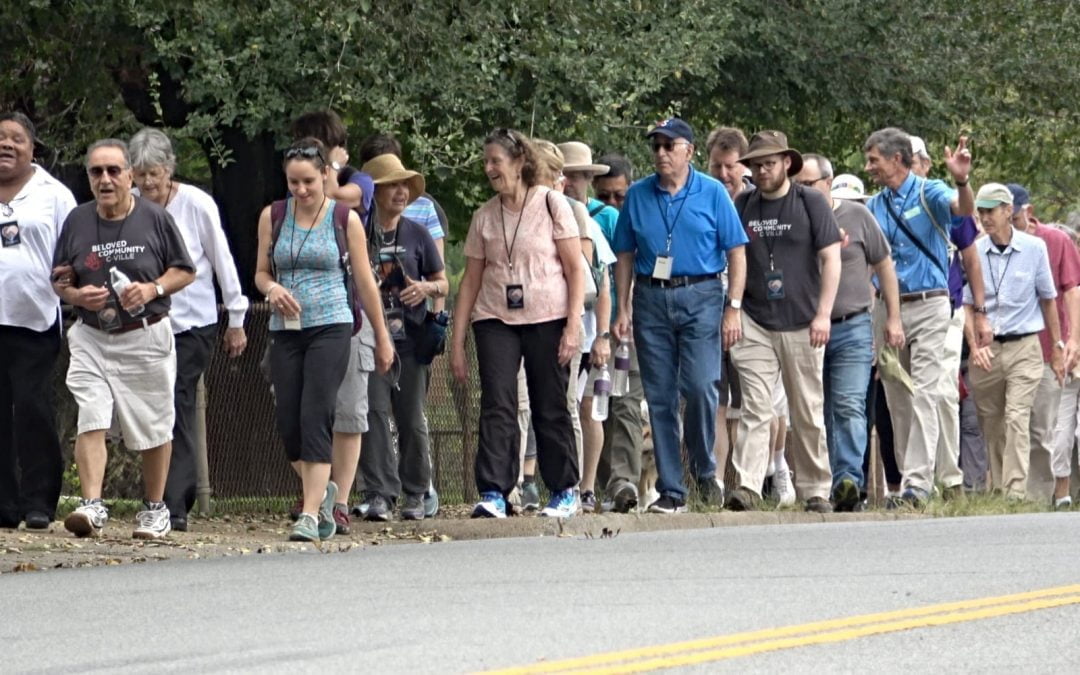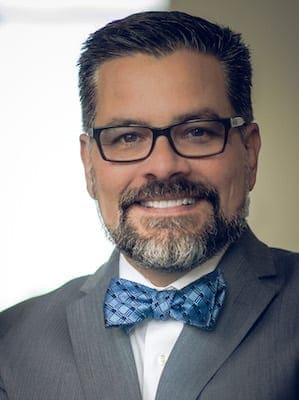The Charlottesville Clergy Collective (CCC) made an important decision during the summer of 2017; it would not allow the conflict that engulfed its city to define the future.
When white supremacists descended on Charlottesville on Aug. 12 of that year, blatant racism emerged from the shadows.
For white Americans, it was a surprise. For African-Americans, Hispanics, Arabs, Native Americans and people from other cultures, it was exposing what they already knew: America is a superpower built on the evils of racism.
With this acknowledgment, Charlottesville clergy began discussing and developing an event that would be both honest about reality and hopeful for the future.
After a period of conversation and planning, they came up with the idea of a pilgrimage that would begin in Charlottesville and end in Jamestown.
Along the way, they would reflect on the evil repercussions of racism and discover an honest path forward toward redemption.
EthicsDaily was invited by CCC to participate in and cover the pilgrimage, which began with one of the most moving experiences imaginable.
Starting at the Jefferson School in downtown Charlottesville, a group of 100 sojourners set out to search for racial justice.
Pilgrims were sent off with inspirational words and beautiful music. As they set out walking the streets of Charlottesville toward Monticello, they walked with conviction and promise.
Watching the sojourners walk down the streets of their city, it was unmistakable that with each step they were reclaiming their city.
They were trampling away the marks of racism and bigotry, attempting to leave a different path for emerging generations – one of love, forgiveness and hope.
As they grew closer to the mountain of Monticello, they were achieving their goals with each footprint left behind.
After a quick community lunch at Sojourners United Church of Christ, walkers set their gaze toward Monticello. As they climbed the mountain, they were ascending to a place of both liberty and despair.
The home of Thomas Jefferson, Monticello may be the prime example of America’s irony.
As the author of the Declaration of Independence and a prominent Founding Father, Jefferson’s words about “all men being created equal” rang loud in Revolutionary Anglo-America while falling silent on Afro-America.
Over the last decade, the notion that Jefferson fathered children by Sally Hemings, a slave, has been confirmed.
In addition, many have noted that Jefferson’s beloved Monticello could have only been successful because of slave labor.
Because he did not pay for labor, Jefferson was able to invest his resources in his mountaintop mansion and business. While slaves did the planting, harvesting, shoeing and building, Jefferson reaped the rewards.
Pilgrimage participants gathered on the sprawling parking lot near the visitors’ center. They encircled the gravesite where Jefferson’s slaves were buried, which is located in the center of the parking lot.
While Jefferson and his family were laid to rest in a high place on the mountain, slaves were buried further down the mountain away from Monticello.
In fact, when they added the visitors’ center and parking lot, it was a local African-American man that told the developers not to place a parking lot on the sacred ground of the hidden cemetery.
History could have very well forgotten this sacred site and the saints that were laid to rest there, if it were not for the local knowledge of one man. Thank God, he spoke up to preserve this hallowed ground.
At the cemetery, the crowd offered prayers and heard from a descendant of Jefferson, Gayle White.
She discussed her famous and non-famous relatives, speaking passionately about the saints that lay at the cemetery and the man who “owned” them.
Jefferson was known as one of the world’s most brilliant thinkers, but black men and women of Monticello were the backbones of his existence. They made Monticello, and in doing so, they made America.
White spoke eloquently about both past and present realities, encouraging the sojourners to walk toward redemption and a new hope.
And with that encouragement, they set off toward the top of the mountain and Jefferson’s home.
Standing alongside Mulberry Row, the crowd was welcomed by the most beautiful violin music – music that Jefferson and slaves were known to listen to during their evenings on the mountain.
As the music fell silent, one by one, participants walked to a microphone and read aloud the names of deceased slaves.
With each name, images of young men and old women began to emerge. Their smiles and laughs echoed in our ears, while their cries and tears broke our hearts. Hercules. Fanny. Ned. Nell. Charles. Jenny. Will. Betty. More than 600 names were read aloud on the mountaintop, transforming slaves into humans.
Walking away from Monticello that day, pilgrims were stirred and inspired. They were stirred by acknowledging the reality of America’s past: the most powerful and prosperous country in the world was built upon the sweat and labor of an enslaved people.
They were inspired to find another path off the mountain, a way that would lead to a more perfect union for all our citizens.
The pilgrimage is not complete by any means, but these first few steps taken by people of goodwill and justice are the needed steps toward a hopeful future.


